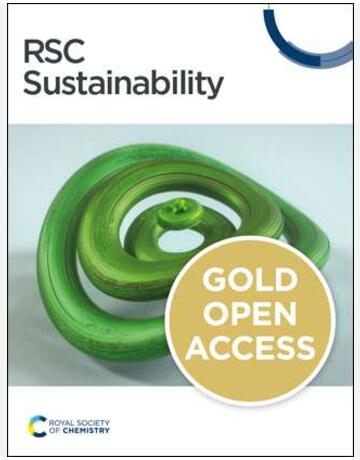Preliminary Findings on the Bioaccumulation and Marine Trophic Transfer of the Antifouling Biocide DCOIT in Soluble and Nanostructured Forms
IF 3.3
3区 环境科学与生态学
Q2 ENVIRONMENTAL SCIENCES
引用次数: 0
Abstract
DCOIT (4,5-Dichloro-2-octylisothiazol-3(2H)-one) is a widely used antifouling biocide that emerged after the ban on tributyltin. It has been immobilized in nanostructured silica (SiNC–DCOIT) to reduce its hazard in maritime coatings. This study aimed to compare the bioaccumulation, trophic transfer, and biomagnification of DCOIT in its soluble and nanostructured forms on mussels Mytilus galloprovincialis, using three different uptake routes: aqueous exposure (i.e., contaminated seawater), dietary exposure (i.e., microalgae Tetraselmis chuii as a contaminated food), and both contaminated food and seawater. DCOIT was determined on water and tissues after 1, 3, and 24 h of uptake and after 72 h of depuration. Briefly, mussels were able to rapidly uptake and metabolize DCOIT and SiNC–DCOIT. Both compounds were non-bioaccumulative, as their bioconcentration and bioaccumulation factor values were lower than 2000. However, the predator–prey biomagnification factors indicated that both forms could be transferred across the trophic web. Therefore, while our findings provide further insight into the environmental risk assessment of DCOIT and SiNC–DCOIT, they do not rule out the possibility of long-term DCOIT bioaccumulation, particularly in areas with constant DCOIT influx. Further studies are thus needed using larger experimental designs and under continuous exposure scenarios to increase the sustainability of the innovative nanomaterial.关于可溶性和纳米结构形式的防污生物杀灭剂 DCOIT 的生物累积和海洋营养转移的初步发现
DCOIT(4,5-二氯-2-辛基异噻唑-3(2H)-酮)是一种广泛使用的防污杀菌剂,是在禁止使用三丁基锡之后出现的。它已被固定在纳米结构二氧化硅(SiNC-DCOIT)中,以减少其在海洋涂料中的危害。本研究旨在比较可溶性和纳米结构形式的 DCOIT 在贻贝身上的生物累积、营养传递和生物放大作用,采用了三种不同的吸收途径:水体接触(即受污染的海水)、饮食接触(即以微藻类 Tetraselmis chuii 作为受污染的食物)以及同时接触受污染的食物和海水。在摄入 1、3 和 24 小时后,以及 72 小时消解后,对水和组织进行 DCOIT 测定。简而言之,贻贝能够快速吸收和代谢 DCOIT 和 SiNC-DCOIT。这两种化合物都不具有生物累积性,因为它们的生物浓缩和生物累积因子值都低于 2000。不过,捕食者-猎物生物放大系数表明,这两种形式的化合物都可以在营养网上转移。因此,虽然我们的研究结果为 DCOIT 和 SiNC-DCOIT 的环境风险评估提供了进一步的见解,但并不能排除 DCOIT 长期生物累积的可能性,尤其是在 DCOIT 不断流入的地区。因此,还需要利用更大规模的实验设计并在持续暴露的情况下开展进一步的研究,以提高创新纳米材料的可持续性。
本文章由计算机程序翻译,如有差异,请以英文原文为准。
求助全文
约1分钟内获得全文
求助全文
来源期刊

Sustainability
ENVIRONMENTAL SCIENCES-ENVIRONMENTAL SCIENCES
CiteScore
6.80
自引率
20.50%
发文量
14120
审稿时长
17.72 days
期刊介绍:
Sustainability (ISSN 2071-1050) is an international and cross-disciplinary scholarly, open access journal of environmental, cultural, economic and social sustainability of human beings, which provides an advanced forum for studies related to sustainability and sustainable development. It publishes reviews, regular research papers, communications and short notes, and there is no restriction on the length of the papers. Our aim is to encourage scientists to publish their experimental and theoretical research relating to natural sciences, social sciences and humanities in as much detail as possible in order to promote scientific predictions and impact assessments of global change and development. Full experimental and methodical details must be provided so that the results can be reproduced.
 求助内容:
求助内容: 应助结果提醒方式:
应助结果提醒方式:


